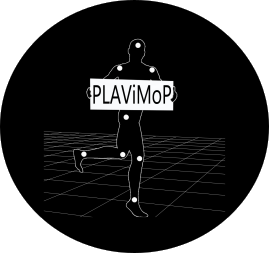
PLAViMoP: How to standardize and simplify the use of point-light displays
Article which introduces PLAViMoP and presents the algorithms used for PLD transformations
Reference
Decatoire, A., Beauprez, S.A., Pylouster, J., Lacouture, P., Blandin, Y., & Bidet-Ildei, C. et al. (in press). PLAViMoP: How to standardize and simplify the use of point-light displays. Behavior Research Methods, Retrieved from https://doi.org/10.3758/s13428-018-1112-x
Abstract
The study of biological point-light displays (PLDs) has fascinated researchers for more than 40 years. However, the mechanisms underlying PLD perception remain unclear, partly due to difficulties with precisely controlling and transforming PLD sequences. Furthermore, little agreement exists regarding how transformations are performed. This article introduces a new free-access program called PLAViMoP (Point-Light Display Visualization and Modification Platform) and presents the algorithms for PLD transformations actually included in the software. PLAViMoP fulfills two objectives. First, it standardizes and makes clear many classical spatial and kinematic transformations described in the PLD literature. Furthermore, given its optimized interface, PLAViMOP makes these transformations easy and fast to achieve. Overall, PLAViMoP could directly help scientists avoid technical difficulties and make possible the use of PLDs for nonacademic applications.
Keywords
Point-light displays . Action observation . Software . Kinematics transfomations . Spatial transformations . Masking dots